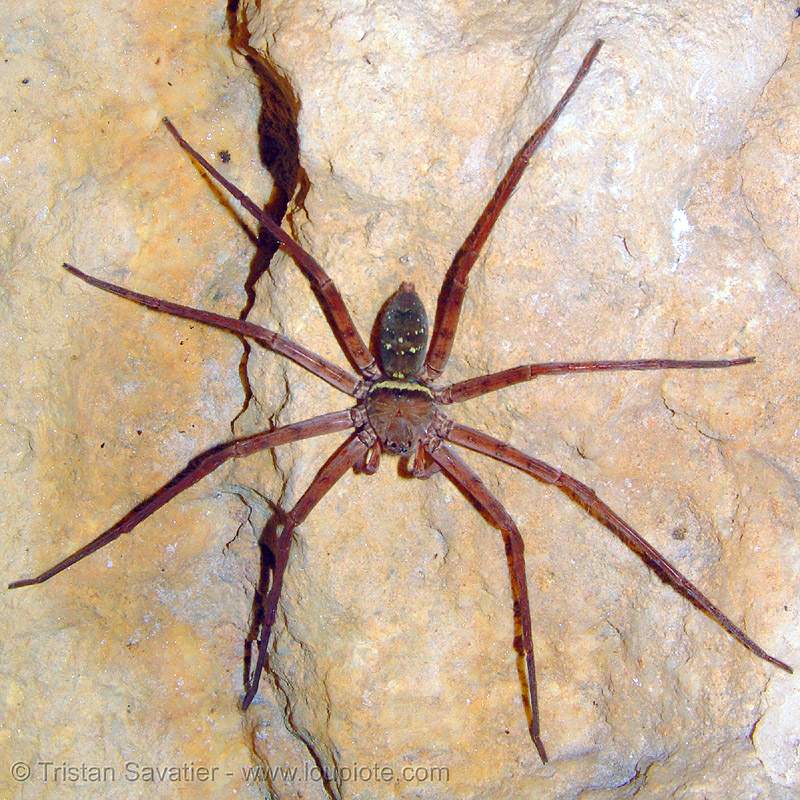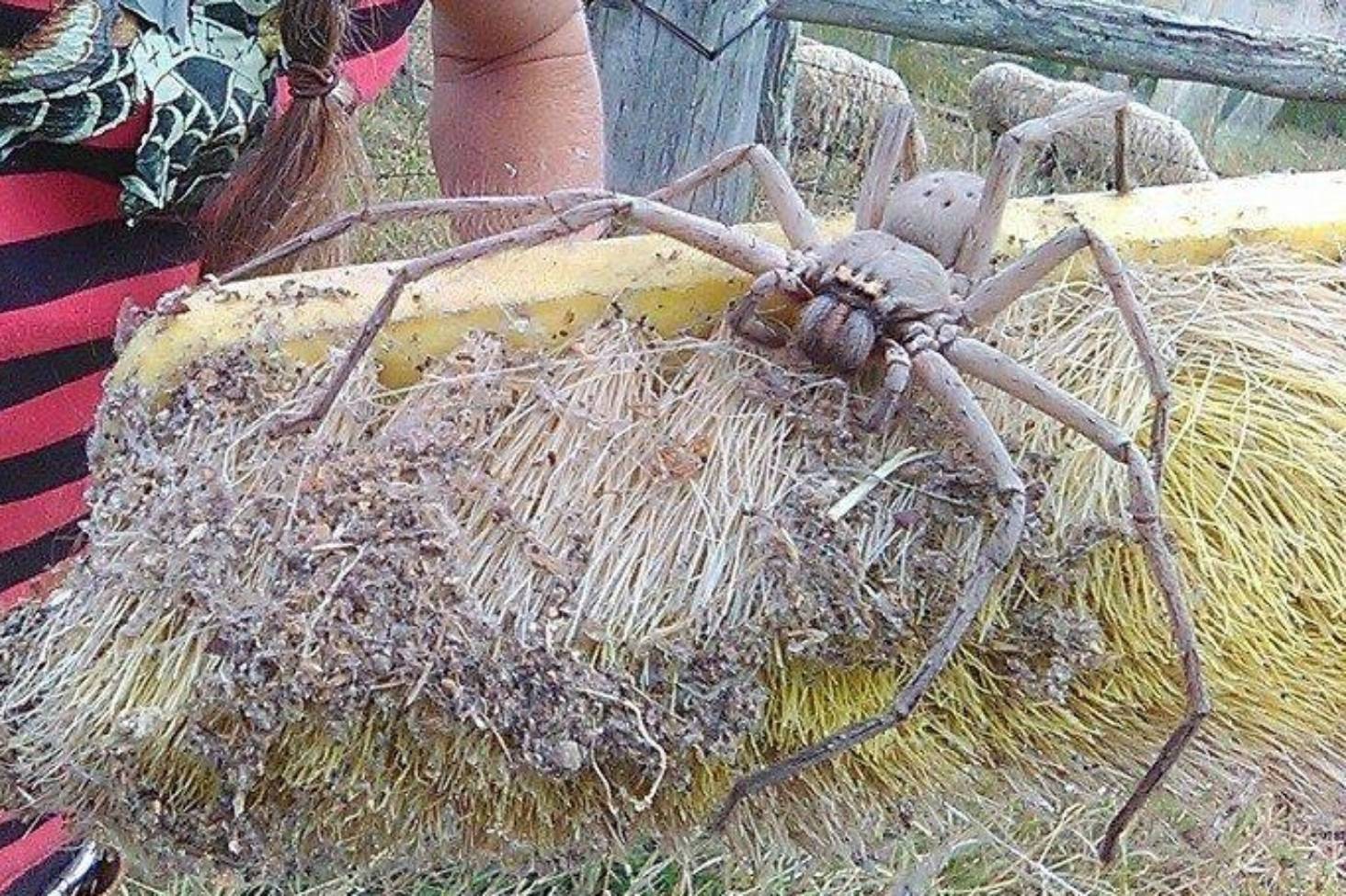The huntsman spider is yellowish-brown in color with numerous dark brown spots on its rear half and some dark bands on its legs right before the first bend. Just like most of the huntsman spiders, this species has longer legs in comparison to its body. The legs of the giant huntsman spider always twist forward in a crab-like manner. The cymbium of the male giant huntsman is approximately three times longer than its tegulum. The females have a characteristically shaped epigyneal field which has two anterior directed bands.

Being the biggest member of the sparassidae family, this spider has a 12 inche leg-span with a 1.8 inche long body. Before the discovery of this spider, the largest known Sparassidae was the Beregama aurea whose body length is 1.6 inches. Another large member of this family which was discovered in the Middle East is the Cerbalus aravaensis.

Distribution
Just like most huntsman spiders, this spider is native to Asia, in fact, it was found in Laos. They are also widespread in South America, Australia, and Africa. In the United States, they live in the warm states like Texas, California, and Florida. These spiders are presumed to have traveled from Asia to the United States in banana boxes, and at times they are referred to as banana spiders. Because of their long legs, pale colors, and no reduction in the eyes, these spiders are believed to reside near the cave entrances in Laos.

Habitat and Diet
The giant huntsman is quite large and can move very quickly. These spiders live under rocks, loose tree barks, under foliage, and in crevices. They are believed to be quite social, and they sit together on tree stumps. Unlike other spiders, the giant huntsman does not create a web to capture its prey; it ambushes or runs after its prey and kills it with its venom and strong fangs. These spiders feed on other smaller insects including spiders, arthropods, smaller frogs, and lizards.

According to worldatlas











